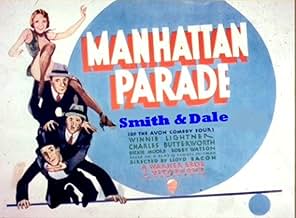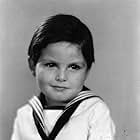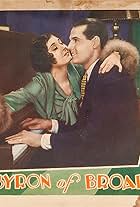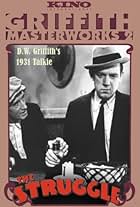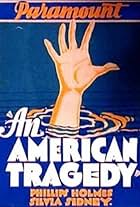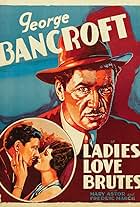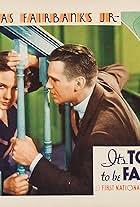Aggiungi una trama nella tua linguaThe fortunes of a Broadway costume company rise and fall depending on who is running it, and whether its clients' shows succeed or not.The fortunes of a Broadway costume company rise and fall depending on who is running it, and whether its clients' shows succeed or not.The fortunes of a Broadway costume company rise and fall depending on who is running it, and whether its clients' shows succeed or not.
Foto
Lilian Bond
- Sewing Girl
- (non citato nei titoli originali)
Buster Brodie
- Little Man in Vassily's Prologue
- (non citato nei titoli originali)
Charles Coleman
- Laffingwell
- (non citato nei titoli originali)
Helen Jerome Eddy
- Delman's Secretary
- (non citato nei titoli originali)
Douglas Gerrard
- Toreador with No Pants
- (non citato nei titoli originali)
June Gittelson
- Miss Hemingway
- (non citato nei titoli originali)
Ethel Griffies
- Mrs. Beacon
- (non citato nei titoli originali)
Trama
Lo sapevi?
- QuizAlthough it was filmed in 2-strip Technicolor, 35MM surviving material is in black & white, but UCLA holdings include a 16MM color print. Two songs by Harold Arlen and Ted Koehler, "I Love a Parade" and "Temporarily Blue," were cut before release, although "I Love A Parade" is heard over the opening and closing credits. "I'm Happy When You're Jealous" by Bert Kalmar and Harry Ruby was also cut before release.
- Citazioni
Herbert T. Herbert: Henry the VIII wore night gowns. No, pajamas weren't introduced into bed - into England - until much later.
- ConnessioniFeatured in Thou Shalt Not: Sex, Sin and Censorship in Pre-Code Hollywood (2008)
- Colonne sonoreI Love a Parade
(1931) (uncredited)
(From the first "Cotton Club" revue)
Music by Harold Arlen
Played during the opening and end credits
Recensione in evidenza
More historical curiosity that entertainment, "Manhattan Parade" is an early sound effort that has dated badly. Perhaps hysterically funny in 1932, the film's static shooting technique only emphasizes the flatness of the jokes. A recurring pair of theatrical producers, played by the comedy team of Smith and Dale, overstays their welcome with a series of tiresome exchanges. Abbott and Costello they are not. The story, which originally had songs, revolves around a theatrical costume company, whose successful president is played by Winnie Lightner. However, Lightner surrenders her feminist credentials early on when she meekly submits to her husband's demands that he run the company and she stay home where she belongs and care for their young son. Needless to say, the philandering husband is no better at business than he is at marriage, and the company falls into debt.
Were it not for Bobby Watson, who plays a designer named Paisley, "Manhattan Parade" would rarely be unwound from its reels. However, Watson's limp wristed character is yet another prime example of gay stereotyping in early Hollywood. His threats to slap his foes or quit and stay home to decorate his apartment are evidently accepted by the other characters as quite normal for a sissy. Whining about fabric that should be maroon rather than cerise, Watson underscores filmdom's concept that gays are silly, shallow freaks with no values of consequence in their lives. While not as offensive as some gay characterizations, Paisley, nevertheless, will irritate viewers who are sensitive to negative stereotypes. Interestingly, the film also features two other male characters, a shy, daffy researcher and an effete, snobbish actor, whose sexuality could also be questioned. The concept of the theatrical world as a haven for gays had already taken root.
Unfortunately, there is little to recommend in "Manhattan Parade" other than its status as a footnote in gay film history. The performances are competent, although Dickie Moore is a scene-stealer as Lightner's son, and Lloyd Bacon's direction is perfunctory given the restraints of the period. This short comedy will seem to drag on humorlessly for hours to viewers who are not dedicated film historians.
Were it not for Bobby Watson, who plays a designer named Paisley, "Manhattan Parade" would rarely be unwound from its reels. However, Watson's limp wristed character is yet another prime example of gay stereotyping in early Hollywood. His threats to slap his foes or quit and stay home to decorate his apartment are evidently accepted by the other characters as quite normal for a sissy. Whining about fabric that should be maroon rather than cerise, Watson underscores filmdom's concept that gays are silly, shallow freaks with no values of consequence in their lives. While not as offensive as some gay characterizations, Paisley, nevertheless, will irritate viewers who are sensitive to negative stereotypes. Interestingly, the film also features two other male characters, a shy, daffy researcher and an effete, snobbish actor, whose sexuality could also be questioned. The concept of the theatrical world as a haven for gays had already taken root.
Unfortunately, there is little to recommend in "Manhattan Parade" other than its status as a footnote in gay film history. The performances are competent, although Dickie Moore is a scene-stealer as Lightner's son, and Lloyd Bacon's direction is perfunctory given the restraints of the period. This short comedy will seem to drag on humorlessly for hours to viewers who are not dedicated film historians.
I più visti
Accedi per valutare e creare un elenco di titoli salvati per ottenere consigli personalizzati
Dettagli
- Data di uscita
- Paese di origine
- Lingua
- Celebre anche come
- She Means Business
- Luoghi delle riprese
- Azienda produttrice
- Vedi altri crediti dell’azienda su IMDbPro
Contribuisci a questa pagina
Suggerisci una modifica o aggiungi i contenuti mancanti

Divario superiore
By what name was Manhattan Parade (1931) officially released in Canada in English?
Rispondi


